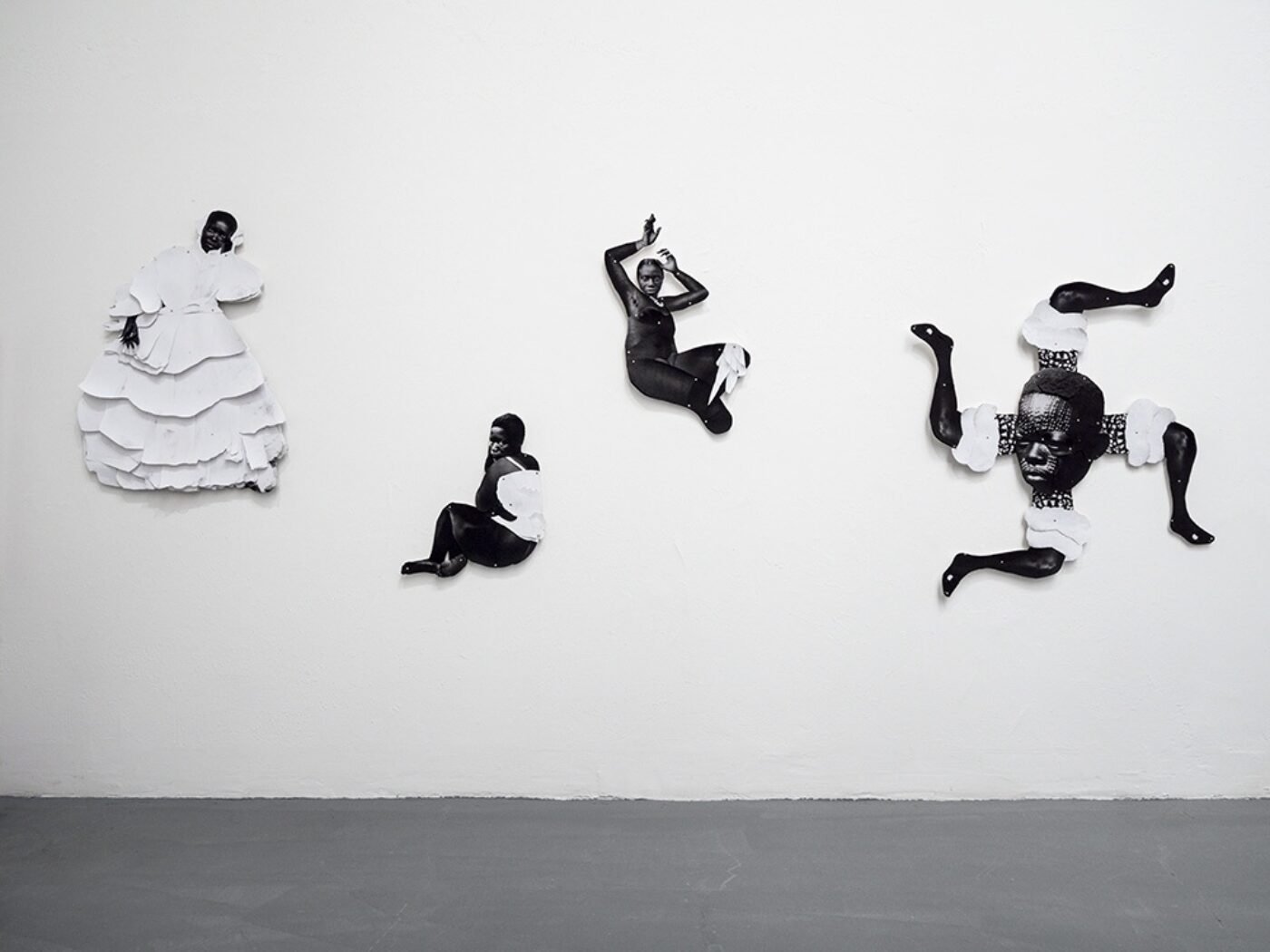Frida Orupabo
Throughout the twentieth century, Black artists used the avant-garde method of collage to explore the multifaceted experiences of their lives and communities. Interestingly, the present moment is seeing an intense resurgence of this form by artists who nod to artistic predecessors like Romare Bearden (1911-1988) while also moving beyond their achievements. Notable examples include the photomontages of Deborah Roberts (b. 1960), the multimedia compositions of Mickalene Thomas (b. 1971), the painted collages of Jonathan Lyndon Chase (b. 1989), and the sewn assemblages of Tschabalala Self (b. 1990). One can add the Norwegian artist Frida Orupabo (b. 1986) to this growing roster. Not only does Orupabo’s work brilliantly expand the exploration of race, gender, and sexuality in Black collage, but it also demonstrates that this phenomenon is not limited to the United States. By considering Orupabo’s collages in relation to the work of Roberts, Thomas, Chase, and Self, viewers can further observe how collage is a preeminent mode for representing Black life globally.
Frida Orupabo, Untitled series, 2018–19, collage with paper pins mounted on aluminum. 58th International Art Exhibition—La Biennale di Venezia, May You Live In Interesting Times. Photo by Gerhard Kassner. Courtesy of the artist and Galerie Nordenhake Berlin/Stockholm/Mexico City.
To compose her collages, Orupabo draws from a collection that includes her personal archive, images found on the internet, reproductions of artworks, and historical photographs that depict the exploits of colonialism. The accompanying text for her recent exhibition “I have seen a million pictures of my face and still I have no idea” at the Fotomuseum Winterthur in Switzerland notes that the artist “dismembers images of Black bodies before reassembling them layer by layer” to show “how photography significantly contributes to the formation and perpetuation of colonial power relations and violence.” In addition to disassembling the body and then reassembling it with paper pins, the artist often adds additional markers like animal parts and everyday objects that further contribute to her study of how the Black body is dehumanized.
Frida Orupabo
Untitled, 2018
Collage with paper and pins, mounted on aluminum
15 1/2 x 30 1/3 in
To make Untitled (2018), Orupabo pinned together a Black woman’s hair and face, joined hands, and a large comb that brushes against the visage. By framing part of the figure with the comb, the artist highlights the way Black women’s hair has been fetishized into an object of intense scrutiny. As viewers, we participate in this objectification, but not without resistance from the subject: her wary gaze reproaches us and her prayer-like hands seem to pull away.
Frida Orupabo, Girl on Horse, 2020
As this work and others by Orupabo attest, the artist is a master of creating juxtapositions. It is the space between these juxtapositions, like the visible spaces that form from the puzzle-like images meeting to form the composition, that challenge us to think beyond generalized representations of the body and instead focus on the intricate parts that meet to represent Black life. The stark presence of the paper pins is key: they seem to suggest that this moment of observation is temporary, that the scrutiny placed on the Black body could dissolve if the pins that hold it in place could just fall.
For further reading: New Readings, New Meanings: Frida Orupabo Interviewed by Jareh Das
—
This edition of Collecting in Context was written by Peter Murphy. He is a PhD candidate in Visual and Cultural Studies at the University of Rochester and an incoming curatorial fellow at Harvard University.



